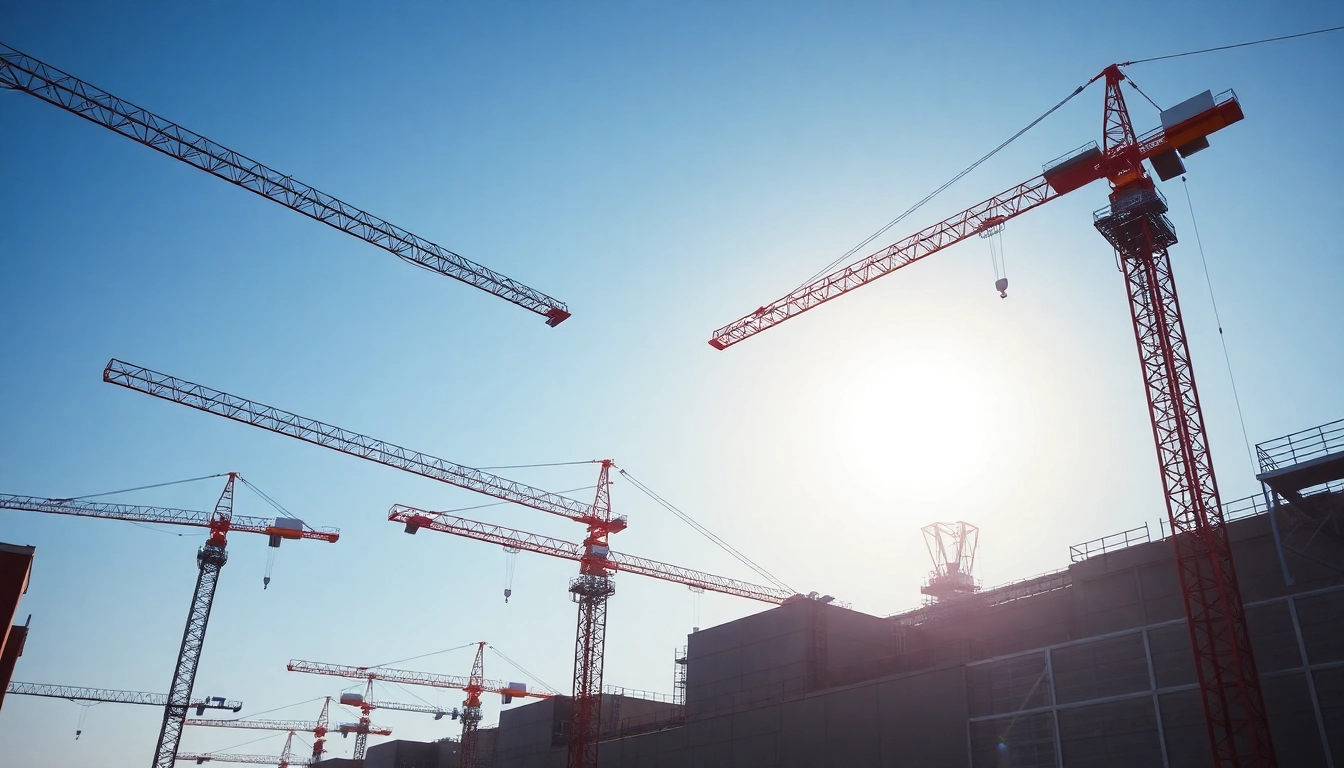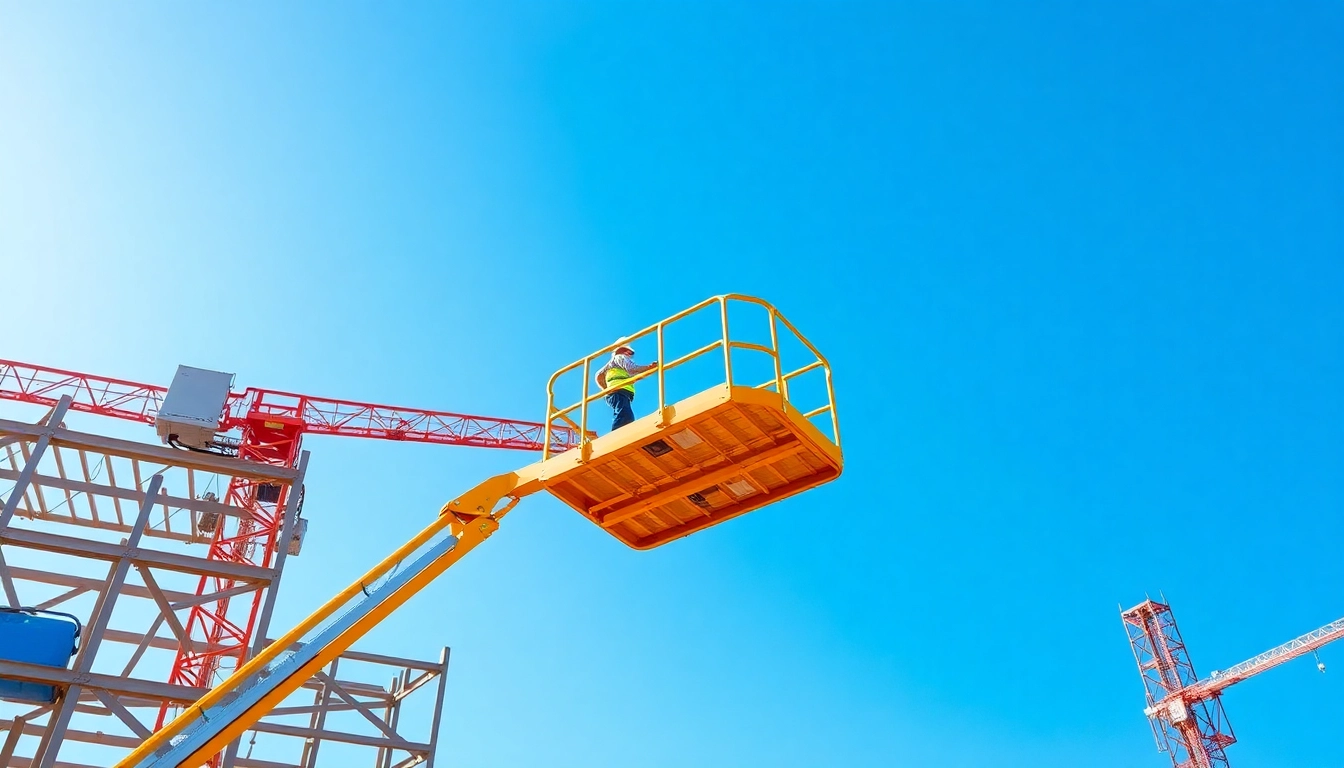Understanding the Basics of Crane Rental in the UK
Crane rental is an essential component of many construction, industrial, and infrastructural projects across the UK. It provides companies with access to vital lifting equipment without the need for outright purchase, thus offering both financial flexibility and operational efficiency. Whether you’re undertaking a small renovation or a large-scale infrastructural development, understanding the fundamentals of crane rental is crucial to ensure safety, cost-effectiveness, and project success.
For those new to the industry or seeking to optimize their lifting operations, exploring the range of available cranes, their costs, regulations, and best practices can significantly impact outcomes. To begin your journey, consider the importance of selecting the right rental solutions aligned with your project’s specific requirements.
Learn more about your options for Crane rental and ensure your project benefits from the latest industry standards and innovations.
Types of Cranes Available for Rent
The UK market offers a diverse array of crane types, each designed to meet specific lifting needs and site conditions. Understanding the characteristics and best-use scenarios of each is essential in choosing the most appropriate equipment for your project.
Mobile Cranes
Mobile cranes are versatile and mobile by design, facilitating quick setup and repositioning. They include all-terrain cranes, truck-mounted cranes, and rough terrains, making them suitable for varied terrains and urban environments. Their flexibility makes them ideal for construction sites with limited space or requiring frequent movement. Notable examples include Liebherr all-terrain cranes and Grove truck-mounted models.
Tower Cranes
Tower cranes are fixed to the ground or attached to buildings and are predominant in high-rise construction. They provide exceptional height and heavy lifting capacity, especially useful for constructing tall structures. Self-erecting tower cranes are popular for smaller projects due to faster setup times.
Crawler and Rough Terrain Cranes
Crawler cranes are equipped with tracks, providing stability and mobility on uneven terrain, making them suitable for large-scale industrial projects. Rough terrain cranes are similar but often smaller, suitable for confined areas or outdoor sites with challenging conditions.
Mini, Spider, and Portable Cranes
For smaller, detailed jobs or indoor applications, mini and spider cranes provide precision and ease of maneuverability. These are perfect for renovation projects or areas with limited access.
Specialized Cranes
Including floating cranes for marine projects, pedestal cranes for industrial setups, and lorry loader cranes for logistics operations, these specialized options expand the scope of capabilities within UK crane rental services.
Key Factors Influencing Crane Rental Costs
Cost considerations are central when planning to rent a crane. Several factors influence rental prices, which can vary significantly based on project scope, equipment type, and location.
Type and Size of Crane
The larger and more complex the crane, the higher the rental cost. For example, a 25-tonne mobile crane might cost around £650 per day, whereas heavy-duty tower cranes can reach thousands of pounds per week, especially with additional service needs.
Rental Duration
Daily, weekly, or monthly rates impact overall costs. Short-term rentals typically have higher daily rates but may be more economical for quick projects. Long-term contracts often attract discounts or fixed pricing arrangements.
Location and Accessibility
Proximity to urban centers, site accessibility, and transportation logistics can affect costs. Urban projects may incur higher transportation and setup fees due to space constraints and traffic regulations.
Operator and Support Services
Hiring an experienced operator or opting for comprehensive support (maintenance, safety inspections) adds to expenses but is crucial for safety and efficiency. Many providers include operator support as part of the rental package.
Additional Equipment and Accessories
Extra features like jib attachments, counterweights, or special rigging components can increase costs. Proper planning for these needs ensures seamless project execution.
Legal Regulations and Safety Standards for Crane Operations
Operating cranes in the UK is tightly regulated to safeguard workers, the public, and property. Compliance with legal standards and safety regulations is non-negotiable for rental providers and clients alike.
Health and Safety at Work Act
This legislation mandates employers to ensure the health and safety of all workers, including crane operators. It covers risk assessments, safe working practices, and the provision of suitable training.
Lifting Operations and Lifting Equipment Regulations (LOLER)
LOLER specifically governs the safe use of lifting equipment, requiring thorough inspections, maintenance, and certification before use. Only licensed operators should conduct lifts, and equipment must be regularly checked for defects.
Provision and Use of Work Equipment Regulations (PUWER)
PUWER stipulates that machinery, including cranes, must be suitable, inspected regularly, and safe to operate, emphasizing user training and maintenance routines.
Operator Qualifications
UK law mandates that crane operators hold valid certifications from recognized training institutions. Ensuring your provider supplies qualified operators minimizes legal liability and enhances safety.
Site-specific Regulations
Depending on local authorities and project specifics, additional permit requirements or restrictions may apply. Coordination with relevant agencies and adherence to local ordinances is essential to prevent delays and ensure compliance.
Implementing Safety Best Practices
Regular risk assessments, clear communication channels, proper signage, and emergency procedures are cornerstones of a safe crane operation environment. Invest in continuous training to stay ahead of evolving safety standards.
Selecting the Right Crane Rental Service
Choosing a reputable crane rental provider is critical to project success. The right partner ensures equipment quality, safety compliance, reliable service, and value for money.
Evaluating Equipment Quality and Fleet Size
Start by assessing the provider’s fleet. Leading companies maintain modern, well-maintained equipment that adheres to safety standards. A diverse fleet offers flexibility to match project-specific demands, from lightweight mini cranes to heavy-duty tower and crawler cranes. Request documentation of maintenance records and certifications to verify condition and compliance.
Assessing Service Providers’ Experience and Reputation
Experience translates into operational efficiency and safety. Look for providers with proven track records, positive client testimonials, and industry recognition. Reviews and case studies can reveal their capability, responsiveness, and customer satisfaction levels.
Additional Services: Operator Support and Maintenance
Some providers offer comprehensive packages including qualified crane operators, site visits, maintenance, and safety supervision. These services reduce logistical burdens and improve safety standards, especially for complex or large projects. Prioritize providers who maintain transparent communication and flexible service arrangements.
Cost Management and Budgeting for Crane Rental
Proper financial planning is vital when engaging in crane rental projects. Understanding the cost structure and expected expenses minimizes surprises and ensures optimal resource allocation.
Understanding Pricing Structures and Hidden Fees
Most providers advertise base rates but may include additional costs such as fuel surcharges, overtime, transportation, permits, and operator charges. Always request a detailed quote that itemizes all potential expenses to avoid unforeseen additional charges.
Comparing Local Providers for Best Value
Research local companies to compare prices and service offerings. While cost is important, consider reputation, equipment quality, and support services to ensure you’re not sacrificing safety or reliability for lower prices. Leverage online reviews, industry directories, and professional networks for insights.
Planning for Unexpected Expenses and Contingencies
Allocate contingency funds—typically 10-15% of the total budget—for unexpected events such as equipment failure, adverse weather, or site access issues. Proper planning ensures project timelines and costs remain under control despite unforeseen challenges.
Case Studies: Successful Crane Rental Projects in the UK
Examining real-world applications highlights best practices, challenges, and solutions that inform future crane rental strategies.
Large-Scale Infrastructure Developments
In major UK infrastructure projects, such as motorway expansions or railway stations, crane rental companies like Ainscough Crane Hire provided extensive fleets capable of lifting thousands of tonnes of materials at heights exceeding 50 meters. These projects demonstrated the importance of coordinated planning, safety management, and advanced equipment like luffing jib tower cranes to navigate complex layouts.
Urban Construction and Renovation Projects
Urban centers pose space and logistical constraints. Successful projects employed mini and spider cranes for detailed work on façade renovations, while mobile cranes efficiently handled heavy materials across congested city streets. Proper permits and traffic management were integral to smooth operations.
Industrial Facility Upgrades and Installations
Industrial upgrades often require precise lifting of heavy machinery into confined spaces. A case in point involved relocating large processing equipment using crawler cranes with specialized rigging. Equipment maintenance and operator expertise played pivotal roles in ensuring safety and minimizing downtime.
Future Trends in Crane Rental Industry
The crane rental industry in the UK is evolving rapidly, driven by technological advances, environmental considerations, and market dynamics.
Technological Innovations and New Equipment
Emerging technologies such as telematics, remote monitoring, and automation enhance safety, efficiency, and predictive maintenance. Modular and smart cranes with integrated sensors allow for real-time performance tracking, reducing downtime and operational costs.
Environmental Sustainability and Green Cranes
With increasing emphasis on sustainability, manufacturers are developing eco-friendly cranes powered by electric or hybrid systems. These models reduce exhaust emissions, noise pollution, and energy consumption, aligning with UK’s environmental policies and commitments.
Market Growth and Strategic Opportunities
The UK construction sector’s projected growth, driven by infrastructure investment and urban development, provides ample opportunities for crane rental services. Companies investing in fleet modernization, safety innovations, and flexible service models are positioned to thrive amidst evolving demands.

